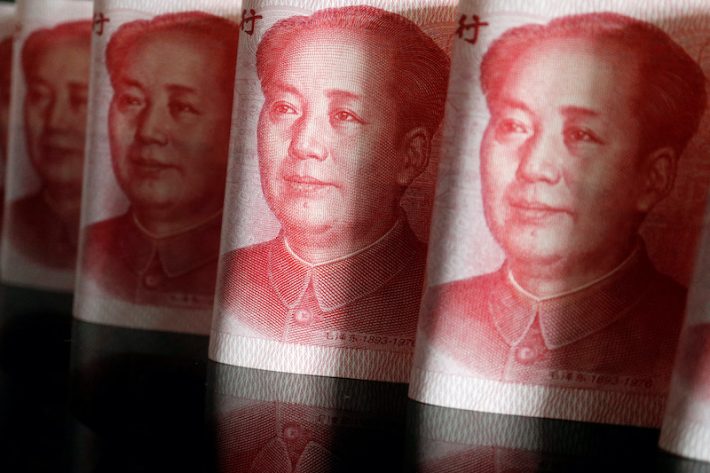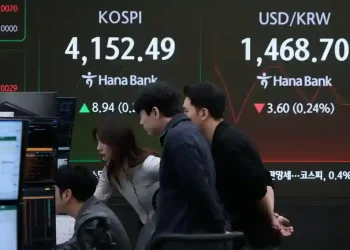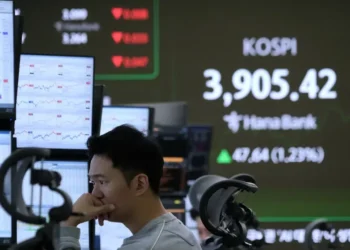China Central Bank Considers Yuan Depreciation Amid Rising Trade Risks
Weaker Yuan Could Counteract US Tariffs
China’s central bank is exploring measures to allow the yuan to weaken as trade tensions with the United States intensify. Policymakers are weighing a potential depreciation of the yuan to 7.5 per dollar to offset the economic shocks posed by increased US tariffs, according to sources familiar with the discussions.
Letting the yuan depreciate could make Chinese exports more competitive by lowering their dollar-denominated costs. This strategy may also create room for looser monetary policies to stimulate the domestic economy. The move comes as China braces for heightened trade risks following Donald Trump’s inauguration as US president next month. Trump has pledged to impose a universal 10% tariff on imports and a 60% tariff specifically targeting Chinese goods.
High-Level Discussions on Yuan Policy
China’s top financial policymakers, including the People’s Bank of China (PBOC), have been debating how to manage the yuan’s value while addressing trade pressures. Officials have traditionally maintained a tightly controlled foreign exchange rate, allowing the yuan to fluctuate within a 2% range of the central bank’s daily midpoint.
However, sources suggest that next year may see a shift toward a more flexible exchange rate policy. This approach would empower market forces to play a greater role in determining the yuan’s value. The PBOC and the State Council Information Office, which handles government media inquiries, have yet to comment on these discussions.
Policy Shift Signals Economic Adaptation
A recent meeting of the Communist Party’s Politburo signaled a departure from long-standing policy norms. For the first time in 14 years, the government announced plans to adopt an “appropriately loose” monetary policy for the coming year. Notably, the statement omitted any commitment to maintaining a “basically stable yuan,” a term previously emphasized in official communications.
Yuan Could Drop to 7.5 per Dollar
According to a report by the China Finance 40 Forum Research Institute, analysts recommend temporarily shifting the yuan’s anchor from the US dollar to a basket of non-dollar currencies, such as the euro, to enhance flexibility during this period of trade turbulence. This proposal aligns with internal discussions suggesting the yuan could drop to 7.5 per dollar, representing a 3.5% depreciation from its current level of around 7.25.
This level of depreciation could benefit China’s economy by boosting export earnings, reducing deflationary pressures, and helping achieve its challenging 5% economic growth target for next year. The yuan’s value has already declined by nearly 4% against the dollar since September as investors prepare for a more aggressive US trade stance under Trump.
Historical Precedent and Economic Implications
During Trump’s previous term, the yuan weakened by over 12% against the dollar between March 2018 and May 2020 amid escalating trade tensions. A weaker yuan could once again act as a buffer, alleviating the impact of tariffs and supporting China’s export-driven economy.
While some analysts predict the yuan may fall to 7.37 per dollar by the end of next year, the PBOC has a track record of managing volatility through state-backed interventions in currency markets. This approach ensures stability while allowing for strategic adjustments to address external economic pressures.
Balancing Risks and Opportunities
As China navigates the challenges of US trade policies, a more flexible yuan policy could provide a critical tool for economic resilience. However, this strategy carries risks, including potential capital outflows and increased costs for imported goods. Policymakers will need to carefully balance these factors to protect China’s economic stability while responding to external trade pressures.
This article was rewritten by JournosNews.com based on verified reporting from trusted sources. The content has been independently reviewed, fact-checked, and edited for accuracy, neutrality, tone, and global readability in accordance with Google News and AdSense standards.
All opinions, quotes, or statements from contributors, experts, or sourced organizations do not necessarily reflect the views of JournosNews.com. JournosNews.com maintains full editorial independence from any external funders, sponsors, or organizations.
Stay informed with JournosNews.com — your trusted source for verified global reporting and in-depth analysis. Follow us on Google News, BlueSky, and X for real-time updates.














